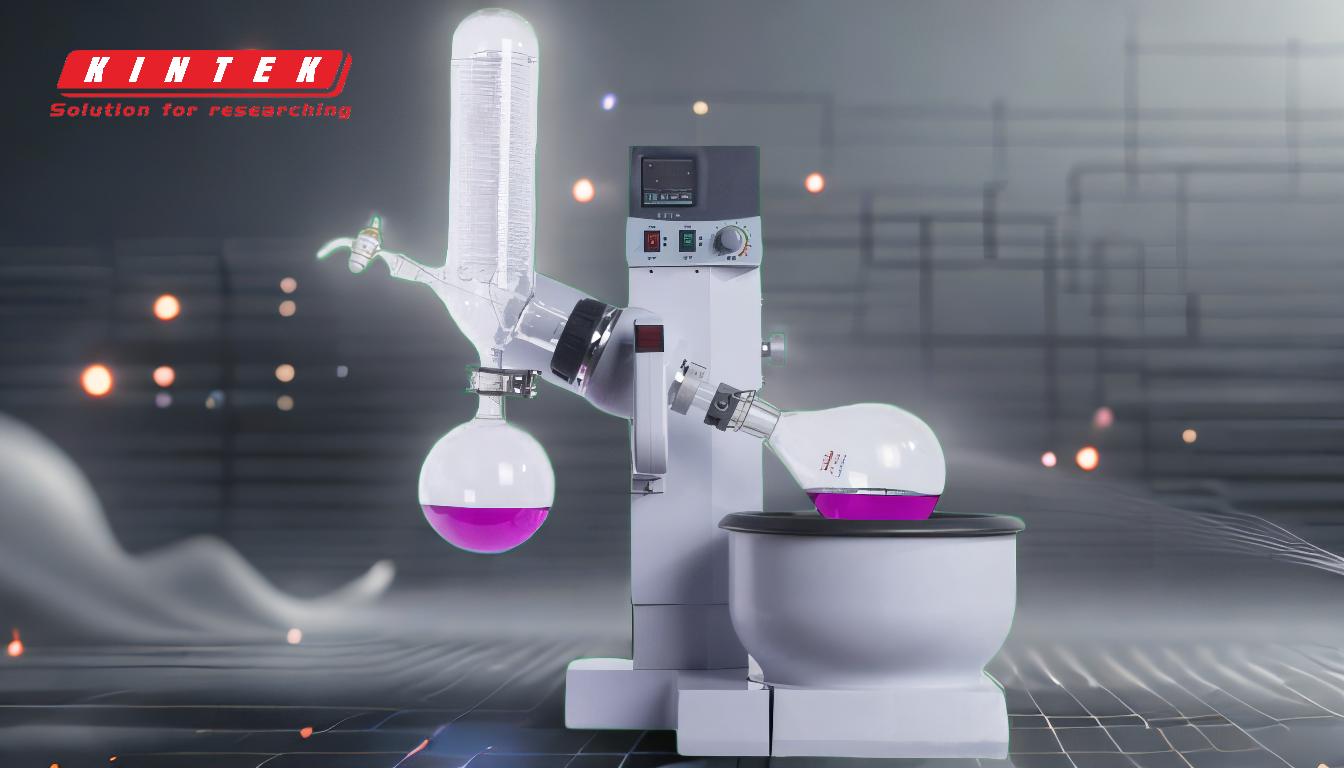Rotary evaporators (RotoVaps) significantly increase the rate of evaporation through a combination of reduced pressure, controlled heating, and mechanical rotation. By lowering the pressure inside the system, the boiling point of the solvent is reduced, allowing evaporation to occur at lower temperatures. Simultaneously, the rotating flask increases the surface area of the solvent exposed to heat, enhancing evaporation efficiency. Additionally, the heating bath provides gentle and controlled heat, while the condenser efficiently recovers the evaporated solvent. Together, these factors create an optimized environment for rapid and efficient solvent removal, particularly useful for heat-sensitive materials.
Key Points Explained:

-
Reduced Pressure Lowers Boiling Point:
- The vacuum system in a RotoVap reduces the pressure inside the evaporation flask, which lowers the boiling point of the solvent. This allows evaporation to occur at much lower temperatures than under normal atmospheric pressure.
- Lowering the boiling point is particularly beneficial for heat-sensitive compounds, as it minimizes the risk of thermal degradation while accelerating the evaporation process.
-
Increased Surface Area Through Rotation:
- The rotating flask creates a thin film of solvent on the inner walls of the flask, significantly increasing the surface area exposed to heat and vacuum.
- This thin film evaporates more quickly than a static liquid surface, as the rotation ensures continuous renewal of the solvent layer in contact with the heat source.
-
Controlled Heating from the Water Bath:
- The heating bath provides gentle and uniform heat to the flask, ensuring that the solvent evaporates efficiently without overheating the sample.
- Precise temperature control is crucial for optimizing evaporation rates while protecting sensitive materials from thermal damage.
-
Efficient Condensation of Evaporated Solvent:
- The condenser unit cools the evaporated solvent vapor, converting it back into liquid form for collection.
- Efficient condensation ensures that the system maintains a consistent vacuum, preventing pressure buildup that could slow down evaporation.
-
Combination of Factors for Optimal Performance:
- The interplay between reduced pressure, rotation, heating, and condensation creates an environment where evaporation occurs rapidly and efficiently.
- This combination is particularly advantageous for applications requiring the removal of solvents from heat-sensitive or delicate compounds, such as in the extraction of flavors, essences, or pharmaceuticals.
By leveraging these mechanisms, rotary evaporators provide a highly effective method for accelerating solvent evaporation while maintaining the integrity of the materials being processed.
Summary Table:
| Key Mechanism | Description |
|---|---|
| Reduced Pressure | Lowers boiling point, enabling evaporation at lower temperatures. |
| Rotation | Increases surface area, accelerating evaporation through a thin solvent film. |
| Controlled Heating | Provides gentle, uniform heat to prevent overheating and protect materials. |
| Efficient Condensation | Recovers evaporated solvent, maintaining consistent vacuum for optimal results. |
| Combined Factors | Creates an optimized environment for rapid, efficient solvent removal. |
Discover how rotary evaporators can optimize your lab processes—contact us today for expert advice!
















